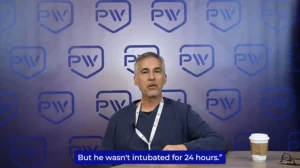President Biden & Congress Block a Railroad Strike to Keep Critical Commodities Flowing
According to PBS News Hour, “Congress voted this week to impose a contract on [railroad workers] to avoid the economic disaster that would accompany a railroad strike.” This is despite challenges from rail worker unions representing a majority of rail workers. PBS News Hour further reports on specific instances where rail workers are struggling to find enough time away to adequately address their personal lives: “workers and their unions say the deal didn’t do enough to address their quality-of-life concerns and didn’t add any sick days.”
So why did President Biden agree to sign the bill and block a railroad strike? According to Allan Rutter, Division Head for the Freight Mobility & Infrastructure Investment Analysis Division of Texas A&M Transportation Institute, to block a railroad strike, boils down to the critical need to keep rails in operation to support numerous industries and applications.
Allan’s Thoughts
“Some might be wondering why Congress would be intervening, what was it about the importance of rail transportation that Congress created the Railway Labor Act in 1926? Here are some of the examples of why so many industry groups are asking for congressional action to a vert of freight rail shutdown.
First, it’s a matter of cold for electricity, about 20% of the nation’s electricity is generated by coal fire plants and that coal moves. Drinking water is taken care of by chlorine that moves by rail tank cars. Grain in the Midwest is needed to get to ports for export, and right now Mississippi River levels are so low that agricultural producers are looking to rail to get move some of that grain.
Grain is also moved by rail for livestock feed across the country. Sand is moved by rail for oil and gas extraction, aggregate for roadway construction and concrete production. Much of the work that’s being fueled by the IHAA that Congress passed about a year ago, it depends on rail to move some of those materials.
And finally, motor vehicle parts and components and finished vehicles move between plants in Mexico, US and Canada. Now, even if Congress acts this week to avert a strike, railroads have a lot of work to do. Shippers and regulators are expecting better service levels, and the railroads themselves are gonna have to repair the relationship they have with the thousands of workers they depend on even after this strike is averted. Thank you.”









